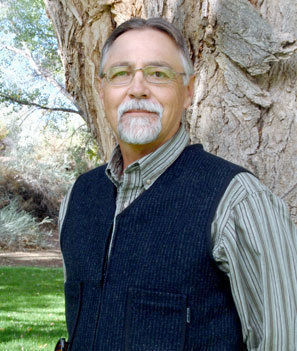I believe the initial draft of the Public Lands Initiative is not an unreasonable first attempt for a legislative solution to the long-standing disagreements on public land management in our region. It needs some additional work, but this process characterizes the nature of real compromise. And compromise is really the only solution, since it’s been apparent for 30-plus years of trying that consensus will never be reached. While I am not satisfied with all aspects of the proposal, I support the method this type of collaborative process and legislation entails.
In Grand County, the bill provides nearly 460,000-plus acres of wilderness. In addition to this wilderness, it creates 150,000 acres of National Conservation Areas, a 35,000-acre Special Management Area around Castle Valley for watershed protection, and expands Arches National Park by nearly 20,000 acres. It creates nearly 270 miles of protected Wild and Scenic Rivers that add approximately 86,000 acres of protected lands. The plan also eliminates roughly 85,000 acres of lands from further long-term mineral development in four of six special recreation management zones in Grand County.
By my reckoning, that’s approximately 816,000 acres of protected lands, nearly one-third of our entire county. I know the conservation community does not like the fact that, with the exception of the Arches expansion, none of these lands would be Class I airsheds, they don’t like language that prohibits buffer zone management around these designated lands, and they don’t like the ability to continue grazing in designated wilderness areas. Designating all these protected areas as Class I airsheds would enable environmental litigation in the future on projects occurring hundreds of miles away from the region. Allowing buffer zones would allow the same type of actions and would result in no certainty for activities outside these protected areas. And the Wilderness Act itself allows for contained grazing in designated wilderness areas; this is not a new thing specific to this bill.
So what did the “development” side get in return for 800,000-plus acres of conservation designations? Because in compromise, both “sides” should be willing to give something in order to get something. In Grand County, there would be resolution to the long-standing road issue of RS 2477, although that language needs to be clarified so that the county would share in the resultant permanent rights of way with the state. The county would gain title to lands with potential for economic growth at the Canyonlands Airport, the Sand Flats and the DOE cleanup site, once that cleanup is complete. The state would be granted a large block of trade-in lands for federal land exchange that would be in areas where additional economic growth could occur in the form of mineral development. The legislation honors the county work at the Big Flat to find balance there, rather than the extremely restrictive measures suggested by the BLM’s Master Leasing Plan. And the county could see economic benefit from granting a transportation corridor to the state along the Book Cliffs route into the Uintah Basin. We’ll also hopefully get exclusion from future Antiquities Act designations, so that any future negotiations could be conducted with a level playing field.
I don’t believe the environmental community was ever serious about a compromise solution, knowing they held the ultimate trump card in the process, a presidential monument declaration which they are now calling for. I find that unfortunate, but not surprising. I understand their goal now is to “put a stake through the heart” of the proposal and kill it, and their marketing machine is in full force. The proposal is being called a “climate bomb,” it will “destroy our children’s future,” it “rolls back current protections,” it’s a “giveaway to the hydrocarbon industry,” etc. The facts simply don’t support the hyperbole of these allegations. It seems the entire country has lost the ability to understand or even consider compromise and balance. It’s one extreme or the other. As a result, we live with great uncertainty, and the only ones who win are the attorneys, who can keep these complex issues and uses of our resources tied up in never-ending litigation, and inconsistent legal decisions and political subterfuge for decades. To me, it’s time to resolve some of these issues and move on. That’s what this bill is attempting to provide.
I know we have residents who would look at this list and say none of it is of benefit to Grand County. I know we have residents who don’t support this process at all, and believe we need no protective land designations. And that’s all right, everyone gets an opinion, but I would disagree with both of those conclusions. A county needs opportunity for economic growth and expansion, along with protection of unique and valuable lands and resources. This draft language is a start in the right direction.
Lynn Jackson is a member of the Grand County Council, but the views expressed are his and do not reflect the council’s formal position. He spent 32 years in public land management in southeastern Utah.



